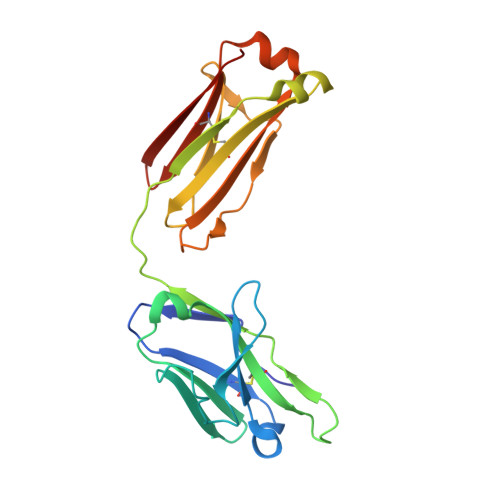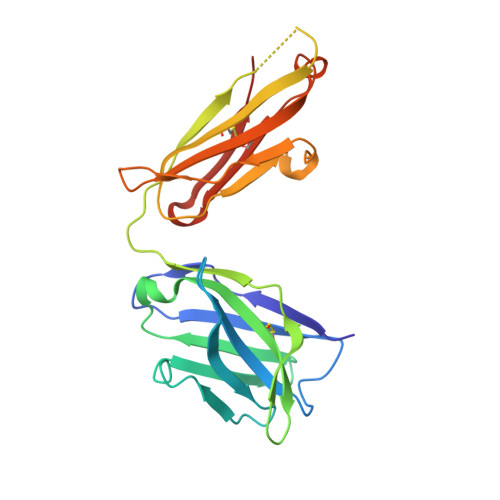An Engineered Human-Antibody Fragment with Fentanyl Pan-Specificity That Reverses Carfentanil-Induced Respiratory Depression.
Eubanks, L.M., Pholcharee, T., Oyen, D., Natori, Y., Zhou, B., Wilson, I.A., Janda, K.D.(2023) ACS Chem Neurosci 14: 2849-2856
- PubMed: 37534714
- DOI: https://doi.org/10.1021/acschemneuro.3c00455
- Primary Citation of Related Structures:
8TFP, 8TFQ, 8TFR - PubMed Abstract:
The opioid overdose crisis primarily driven by potent synthetic opioids resulted in more than 500,000 deaths in the US over the last 20 years. Though naloxone, a short-acting medication, remains the primary treatment option for temporarily reversing opioid overdose effects, alternative countermeasures are needed. Monoclonal antibodies present a versatile therapeutic opportunity that can be tailored to synthetic opioids and help prevent post-treatment renarcotization. The ultrapotent analog carfentanil is especially concerning due to its unique pharmacological properties. With this in mind, we generated a fully human antibody through a drug-specific B cell sorting strategy with a combination of carfentanil and fentanyl probes. The resulting pan-specific antibody was further optimized through scFv phage display, producing C10-S66K. This monoclonal antibody displays high affinity to carfentanil, fentanyl, and other analogs and reversed carfentanil-induced respiratory depression. Additionally, X-ray crystal structures with carfentanil and fentanyl bound provided structural insight into key drug:antibody interactions.
















